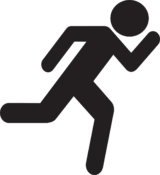What Happens During a Doctor’s Visit for a Head Injury?
Head injuries can be scary and confusing, especially when you’re not sure what to expect during a doctor’s visit. Whether you’ve had a minor bump or something more serious, understanding the process can help ease your mind. In this blog post, we’ll walk you through the typical steps of a doctor’s visit for a head injury, so you can feel prepared and informed.
Table of Contents
1. Initial Assessment 🚑
2. Medical History and Symptoms 📝
3. Physical Examination 🔍
4. Diagnostic Tests 🧪
5. Treatment and Follow-up Care 💊
6. Conclusion
7. FAQs
Initial Assessment 🚑
The first step during a doctor’s visit for a head injury is the initial assessment. This is often the most crucial part, as it helps determine the severity of the injury. When you arrive, medical staff will quickly evaluate your condition. They may ask you or a companion questions like:
• How did the injury occur?
• Have you lost consciousness?
• Are you experiencing any symptoms like dizziness or headaches?
Medical History and Symptoms 📝
Once the immediate risks are managed, the doctor will take a detailed medical history. This includes any previous head injuries, current medications, and underlying health conditions. It’s essential to be honest and thorough during this part, as it helps the doctor assess your overall risk.
Physical Examination 🔍
The physical examination involves a series of checks to evaluate your cognitive and neurological function. The doctor may:
• Test your memory and concentration
• Check your coordination and balance
• Assess your reflexes and pupil response
This step helps the doctor identify any immediate concerns that need addressing.
Diagnostic Tests 🧪
If the doctor suspects a more serious injury, they may recommend diagnostic tests. Common tests include:
• CT Scan: To get detailed images of your brain and identify any bleeding or swelling
• MRI: For a more detailed look at brain structures
These tests help provide a clearer picture of the injury and guide treatment decisions.
Treatment and Follow-up Care 💊
Treatment will vary based on the severity of your injury. For minor injuries, rest and over-the-counter pain relief may be sufficient. More severe injuries might require hospitalization or surgery. Regardless of the severity, follow-up care is vital. The doctor will likely schedule a follow-up appointment to monitor your recovery and address any lingering symptoms.
Conclusion
Understanding what happens during a doctor’s visit for a head injury can help alleviate some of the anxiety associated with the process. From the initial assessment to follow-up care, each step is designed to ensure your well-being and recovery. Remember, it’s always better to err on the side of caution and seek medical attention if you suspect a head injury.
FAQs
Q: How long should I monitor symptoms after a head injury?
A: It’s crucial to monitor symptoms for at least 48 hours after the injury. If you notice worsening symptoms, seek medical attention immediately.
Q: Is a CT scan always necessary after a head injury?
A: Not always. The need for a CT scan depends on the severity of the injury and the symptoms you’re experiencing. Your doctor will make a recommendation based on your specific case.
Q: Can I prevent head injuries?
A: While not all head injuries are preventable, wearing protective gear during sports and ensuring safe environments at home and work can significantly reduce risks.

